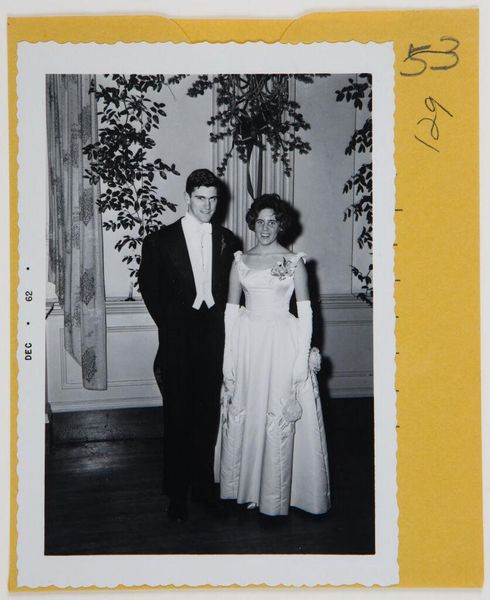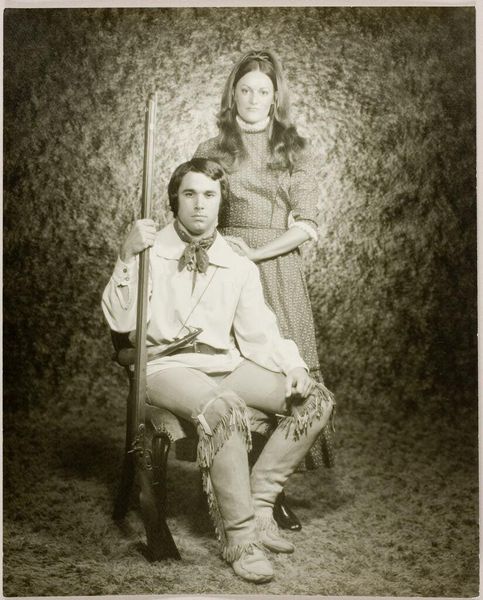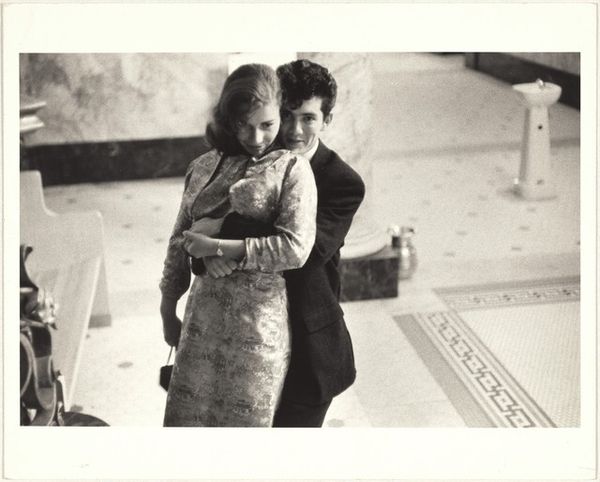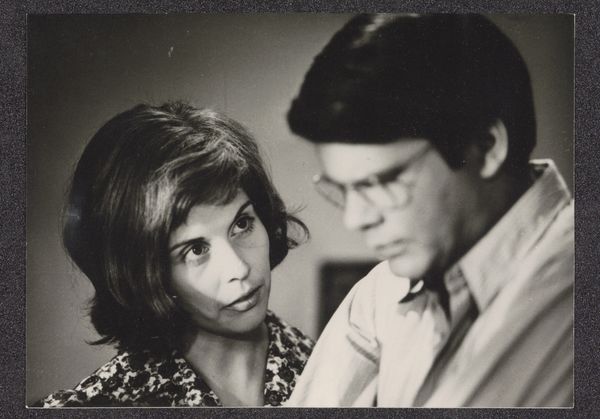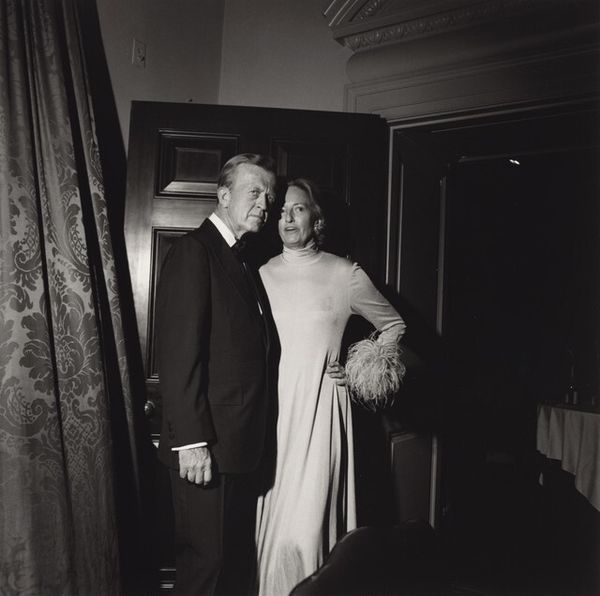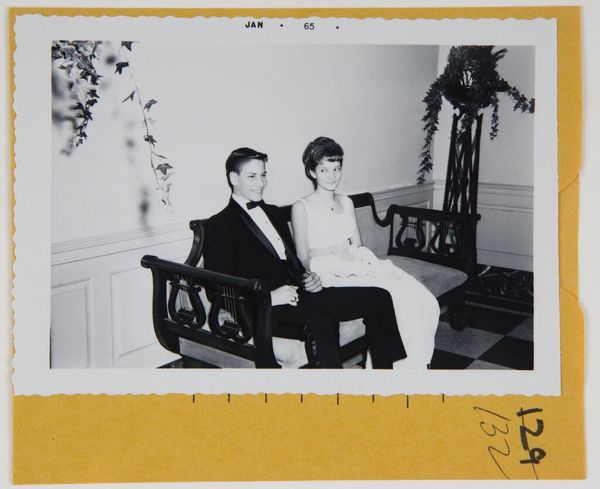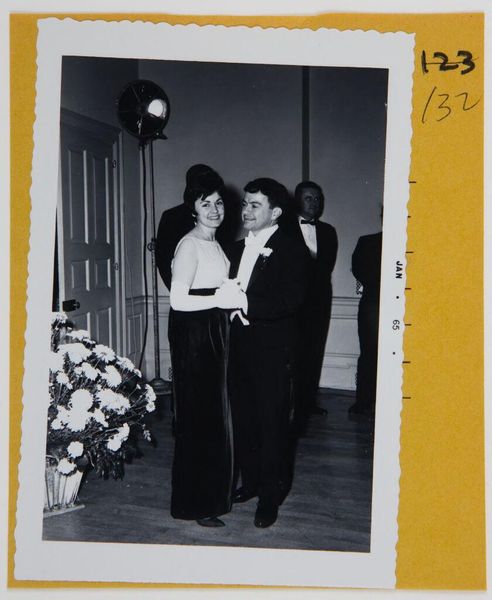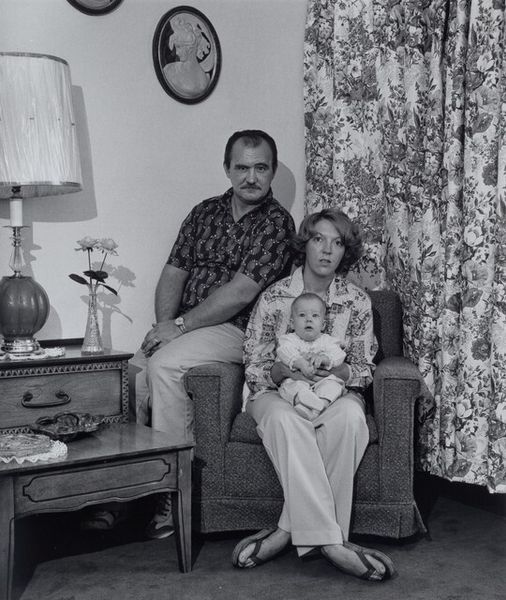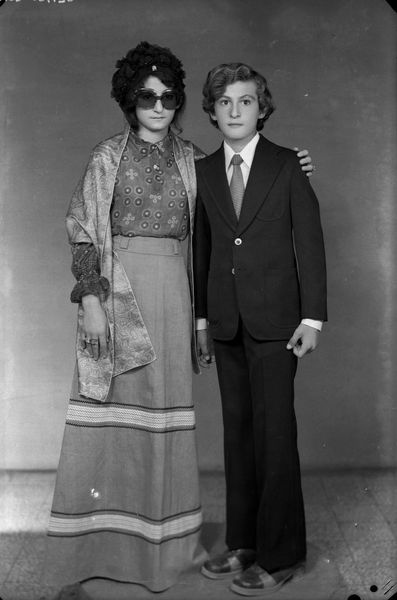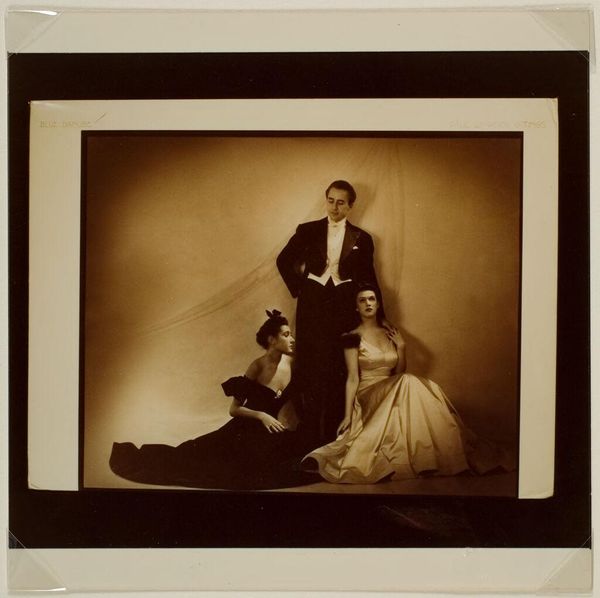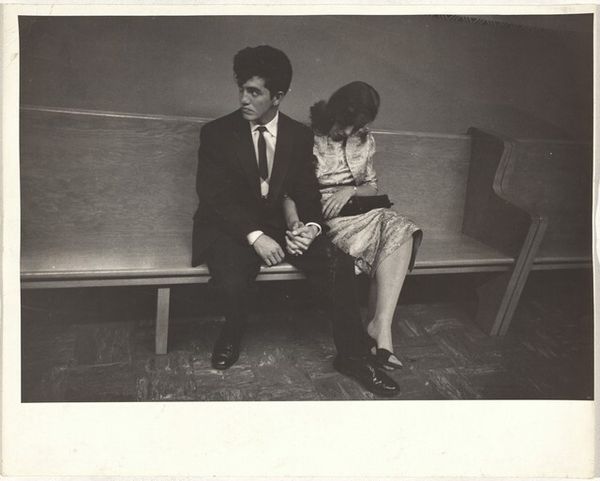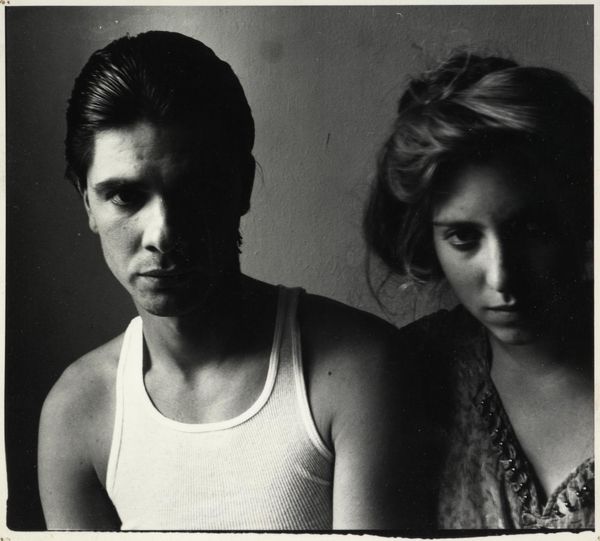
photography, gelatin-silver-print
#
portrait
#
photography
#
historical photography
#
couple photography
#
gelatin-silver-print
#
portrait character photography
#
modernism
Dimensions: image: 32.1 × 25.6 cm (12 5/8 × 10 1/16 in.) sheet: 35.2 × 27.8 cm (13 7/8 × 10 15/16 in.)
Copyright: National Gallery of Art: CC0 1.0
Editor: So, this gelatin-silver print, "Mary and Dan Solomon" by Arnold Newman, dates from 1989. I'm struck by the formality and the considered composition, even down to the textural differences between their outfits. What aspects draw your eye, considering how Newman might have conceived of the final product? Curator: Given Newman's position within photographic portraiture, and my focus on material production, I consider this work through the lens of labour. The gelatin-silver print process itself involves a complex choreography of labor, from the manufacturing of the materials to the photographer's craft and darkroom techniques. This couple's portrait, presented in high-contrast monochrome, uses the very trappings of corporate presentation – suits, formal poses - to subtly challenge what we assume to be a clear, unbiased representation of success. Do you think the material and method serve to celebrate or perhaps subtly critique their social standing? Editor: That's a perspective I hadn't fully considered. Perhaps the choice of gelatin-silver, with its inherent archival qualities, implies a desire for permanence and reinforces the power structure, even if there is room to interpret this as subtle criticism. Does the backdrop itself have meaning or significance for you? Curator: Absolutely. It appears constructed, almost like a minimalist stage set. The use of contrasting tones isolates the Solomons, directing focus towards them and underscoring the deliberate fabrication of the image. The manipulation of light, the carefully chosen clothing, even the couple’s arrangement, all point towards Newman’s labour as an artist. The act of image construction emphasizes wealth and position and invites scrutiny of how these ideas were produced. Editor: I appreciate how you've highlighted the materiality and labor interwoven into what initially appeared to be a straightforward portrait. I’ll never look at this photo in quite the same way. Curator: And I found your thoughts about permanence in the process, pointing to power structures, very useful and perceptive.
Comments
No comments
Be the first to comment and join the conversation on the ultimate creative platform.
